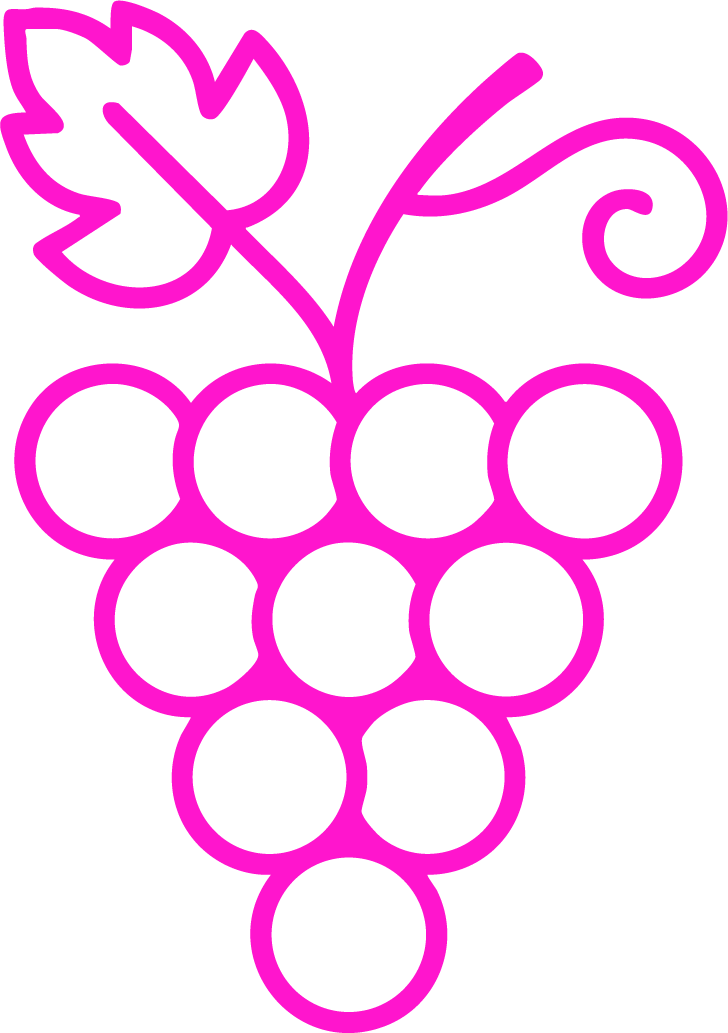Chenin Blanc
🔊 Pronunciation: shen-in blahnk
🔍 Quick Summary
Chenin Blanc is one of the world’s most versatile white grapes, famed for its electric acidity and ability to make everything from bone-dry to lusciously sweet and sparkling wines.
📜 History
Origin: 9th-century Loire Valley, France — ancestry debated but considered indigenous to the region.
Monastic cultivation: Grown extensively in the Middle Ages by monks near Tours.
Name roots: Named for Mont Chenin near Tours, first documented in the 15th century.
Colonial expansion: Introduced to South Africa in the 17th century by Dutch settlers.
Cape favorite: Became South Africa’s most planted grape, often known locally as “Steen.”
🧠 What to Know
A true shape-shifter that delivers thrilling acidity.
Acid powerhouse: High natural acidity is Chenin’s defining trait, perfect for aging.
Style range: Can be dry, off-dry, sparkling, or botrytised dessert wine.
Terroir teller: Expresses soil and climate vividly, from lean minerality to ripe tropicality.
South African star: Produces fresh, fruity styles and serious old-vine wines.
Loire benchmark: Vouvray and Savennières showcase classic French expressions.
📍 Where It’s Found
🇫🇷 Loire Valley (Vouvray) – Clay-limestone soils + cool climate = Crisp, floral, off-dry to sweet styles
Cool Continental | 65–75 °F (18–24 °C) avg daytime highs
🇫🇷 Savennières – Schist soils + cool temps = Dry, mineral, ageworthy wines
Cool Continental | 65–75 °F (18–24 °C) avg daytime highs
🇿🇦 South Africa – Varied soils + Mediterranean warmth = Ripe, tropical, fresh or barrel-aged styles
Warm Mediterranean | 75–90 °F (24–32 °C) avg daytime highs
🇺🇸 California – Sandy-loam soils + dry warmth = Fruity, approachable styles
Warm Mediterranean | 80–95 °F (27–35 °C) avg daytime highs
🇦🇺 Australia – Limestone & sandy soils + sunny climate = Fresh, fruit-forward interpretations
Warm Mediterranean | 80–90 °F (27–32 °C) avg daytime highs
👅 Flavor & Style
Aromatic, vibrant, and capable of enormous range.
Color: Pale straw to deep gold (with age or sweetness)
Aromas & Flavors:
Primary: Green apple, pear, quince, citrus, honeydew
Secondary: Honey, lanolin, wet wool, florals
Tertiary: Marmalade, dried apricot, nutty, earthy with age
Structure: High acidity, gentle phenolic texture
Body: Light to medium-full, depending on style
Alcohol: Typically 11–14% ABV
🛠 Winemaking Notes
Winemakers lean on Chenin’s versatility for a broad spectrum of wines.
Fermentation: Stainless steel for crisp styles, oak for roundness.
Residual sugar: Controlled to produce dry, off-dry, or fully sweet wines.
Sparkling: Traditional method crémant-style wines in Loire.
Botrytis: Used for complex, honeyed dessert wines in select vintages.
🍽 Food Pairing Ideas
Chenin’s acidity and style range make it a pairing superstar.
Savory: Roast chicken, pork belly, Thai green curry
Cheese: Goat cheese, Comté, blue cheese with sweet styles
Unexpected: Sushi, spicy tacos, honey-glazed ham
🔗 Related Topics to Explore
🍇 Vouvray – Loire’s benchmark for Chenin versatility
🍇 Savennières – Dry, mineral, ageworthy Chenin expression
🛢 Botrytis – Noble rot for luscious sweetness
🌱 Schist Soils – Structure and minerality in Loire whites



